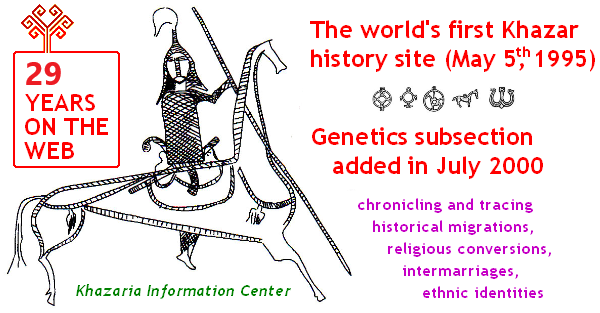![[Khazaria.com - The
American Center of Khazar Studies]](http://www.khazaria.com/images/kic.gif)
A Resource for Turkic and Jewish History in Russia and Ukraine
Last Updated: July 13, 2024
 Read
about The Jews of Khazaria - the
best general-interest book about the Khazars in English
Read
about The Jews of Khazaria - the
best general-interest book about the Khazars in English
Order the improved 3rd edition (February 2018) in hardcover format:
The
Jews of Khazaria from
Amazon.com
from
Amazon.ca in Canada
from Amazon.co.uk in the UK
from
Booktopia in Australia
KINDLE
EDITION (3rd edition)
More ordering options
+ More formats (hardcover, eBook)
+ More information about the book
The sequel is The Maternal Genetic Lineages of Ashkenazic Jews (October 2022)

A new candidate for Atil's location has emerged! It's Semibugry, a large Khazar-era city that was discovered in 2019 by researchers from Astrakhan, including Damir Solovyov. They continued to dig in the summers of 2020, 2021, 2022, and 2023. I added what we know so far about Semibugry's remains to my Atil page.

![[ICON]](http://www.khazaria.com/images/letters.gif) Comments and suggestions are invited. You
are welcome to e-mail the host of this site, Kevin Brook, at
Comments and suggestions are invited. You
are welcome to e-mail the host of this site, Kevin Brook, at

